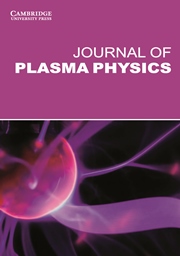No CrossRef data available.
Article contents
Evolution and scalings of plasma profiles in the ASDEX divertor
Published online by Cambridge University Press: 31 January 2002
Abstract
Based on a database, a number of conclusions are derived concerning the power flow into the divertor region of the ASDEX tokamak. The non-transition to detachment in ASDEX is investigated with respect to the sputtering of the copper divertor plates. Following the definition of the low- and high-recycling regions, the best fittings of the power widths in front of the divertor plates are extracted for Ohmic (OH) or neutral-beam-injection heating in low-confinement mode (NBI, L-mode) shots. On the basis of these fittings, it is concluded that the safety factor q and the electron temperature in the divertor can be considered as the main robust parameters. In contrast, the peak of the power inserted into the divertor does not behave as a robust parameter, thus introducing the problem of colinearities.
Information
- Type
- Research Article
- Information
- Copyright
- 2001 Cambridge University Press

